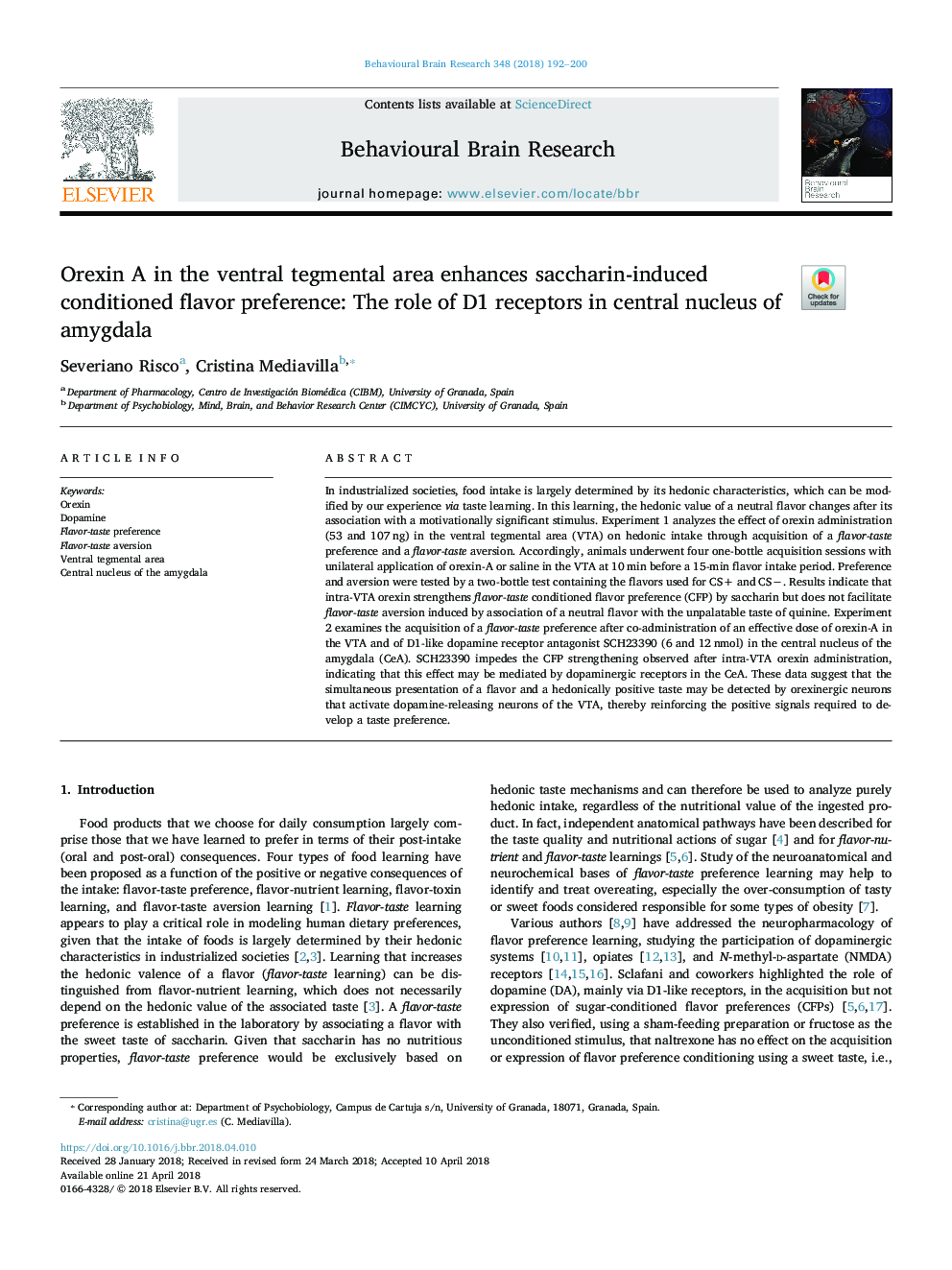| Article ID | Journal | Published Year | Pages | File Type |
|---|---|---|---|---|
| 8837752 | Behavioural Brain Research | 2018 | 9 Pages |
Abstract
In industrialized societies, food intake is largely determined by its hedonic characteristics, which can be modified by our experience via taste learning. In this learning, the hedonic value of a neutral flavor changes after its association with a motivationally significant stimulus. Experiment 1 analyzes the effect of orexin administration (53 and 107â¯ng) in the ventral tegmental area (VTA) on hedonic intake through acquisition of a flavor-taste preference and a flavor-taste aversion. Accordingly, animals underwent four one-bottle acquisition sessions with unilateral application of orexin-A or saline in the VTA at 10â¯min before a 15-min flavor intake period. Preference and aversion were tested by a two-bottle test containing the flavors used for CS+ and CSâ. Results indicate that intra-VTA orexin strengthens flavor-taste conditioned flavor preference (CFP) by saccharin but does not facilitate flavor-taste aversion induced by association of a neutral flavor with the unpalatable taste of quinine. Experiment 2 examines the acquisition of a flavor-taste preference after co-administration of an effective dose of orexin-A in the VTA and of D1-like dopamine receptor antagonist SCH23390 (6 and 12â¯nmol) in the central nucleus of the amygdala (CeA). SCH23390 impedes the CFP strengthening observed after intra-VTA orexin administration, indicating that this effect may be mediated by dopaminergic receptors in the CeA. These data suggest that the simultaneous presentation of a flavor and a hedonically positive taste may be detected by orexinergic neurons that activate dopamine-releasing neurons of the VTA, thereby reinforcing the positive signals required to develop a taste preference.
Related Topics
Life Sciences
Neuroscience
Behavioral Neuroscience
Authors
Severiano Risco, Cristina Mediavilla,
